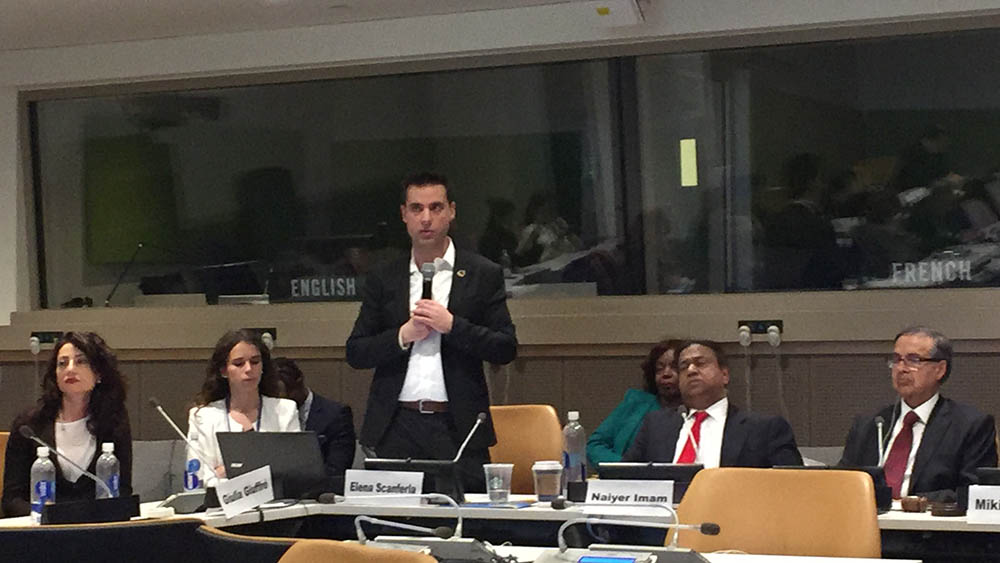My name is Ivan Shumkov, I’m the CEO and founder of Build Academy in New York. I’m an architect, engineer, entrepreneur and professor at NYU. I started Building Academy 5 years ago, which is a platform for professional solutions in the building industry. What we do is education, on one side, building culture and up-skilling people around the world who are working in our field as architects, engineers, designers, real estate developers and builders. At the same time, we are also market place for solutions where we connect different constituents in our industry.
Most of us live in beautiful cities, but you probably don’t realize that 90% of the world lives in sub-standard conditions. They are often exposed to nature disasters and unlivable conditions, which can also cost them their lives. As you know, quality shelter is a basic human right also by UN standards. Our work in the past years has focused on collaborating with companies and international organizations like United Nations, World Bank, in developing solutions particularly on SDG 11 for smart, resilient and sustainable cities. The hurricanes destroyed part of the Caribbean last year, also places like Haiti and the Philippines and others still haven’t recovered from earthquakes and typhoons.
Our mission at Building Academy is to empower professionals and companies to learn, collaborate and build better. As a market place, we are connecting the different constituents in the industry. There are so many people in the industry who are incredibly skilled, however, they live in places that don’t have access and don’t give them the opportunity to intervene in such projects where they are most need. In places like China, for example, there is one architect on every 10.000 people living, and in places like Italy there is one architect for every 400 people. So somehow, we need to match the link between the supply and the demand for talents. That’s why we are connecting our main clients, governments and real estate developers, with designers, engineers, investors, contractors and product manufacturers.
Because of this need for connection, we have completely reinvented the way the procurement in the building industry works. Traditionally, 80% of the UN projects fail because of the inefficient procurement process. 80% of many others projects in our industry fail because there is a miss match between the demands of the clients, and the needs of society and the companies providing solutions. Therefore, instead of this very inefficient procurement process, we have created something, which we called Crowd-solving Challenges, where we work with local communities, representatives of the clients, global experts, and with companies and professionals all over the world who can execute on these projects.
How the process works? The clients come to us and tell us the problem, which could be a building, smart city, product design, technological or other innovation. Then we study the design concept and develop for the entire program for a global challenge. We then invite professionals, experts and companies to solve these problems collaboratively. With the help of an international jury, we select the best solutions and deliver them to our clients. After that, we assist them with the implementation, achieving the impact that society needs and the results that our clients are seeking.
In the past, we’ve worked on disaster relief projects like resilient schools, emergency shelters, refugee camps, sustainable housing, and solar lights. Our current project is a global challenge in partnership with the World Bank for resilient homes, which could be use to rebuild and prepare areas affected by earthquakes, hurricanes, floods and others.
The key benefits of our approach are that we align the projects with new technologies, giving to our clients global innovative solutions, wide exposure and global outreach, and building a grass-root movement. So the solutions, instead of being imposed by a top-down process, are built from a bottom-up with the participation of the communities.
Currently, we have over 60,000 professionals, 15 experts, global network of companies, and global reach on all continents. These are some examples of our work: resilient schools for the Philippines, emergency shelters and refugee camps for Syria, sustainable housing for Nepal, and solar lights for the NGO Liter of Light.
We are currently launching a project with the World Bank for resilient homes. We are creating a global consortium of companies, NGOs, organizations and experts who are passionate about resilient, sustainable, and smart housing. This global challenge will officially start by the end of May and conclude in July, later in the summer we’ll select the best designs. After that we’ll make the solutions available open-source for anyone who wants to use them for building homes. The World Bank and other organizations will use them as a reference to rebuild areas affected by natural disasters. We are focusing on areas suffering from typhoons, floods, earthquakes, war and other causes of migration.
I would like to invite you, if you have interest in rebuilding communities, to reach out to me. We would like to partner with you on providing the world with better shelters and healthier environments. Join our global movement for Building a Better world!


